Trying to identify the hummingbird zipping around your yard?
Hummingbirds are one of the most fascinating creatures that you can find in your backyard. It really helps to know what species of hummingbirds live in Nevada.
While the list below contains all the usual hummingbirds found in Nevada, it’s possible to find a vagrant species of hummingbird that’s not native to Nevada. This is rare but not unheard of.
The following legend can be used for each hummingbird species map to determine what time of year you can see each hummingbird in your area.
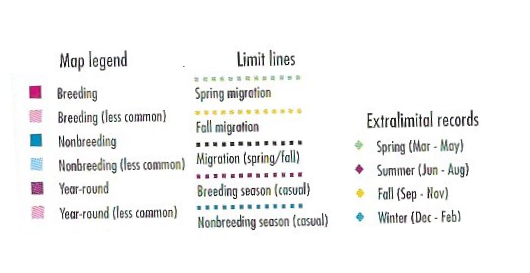
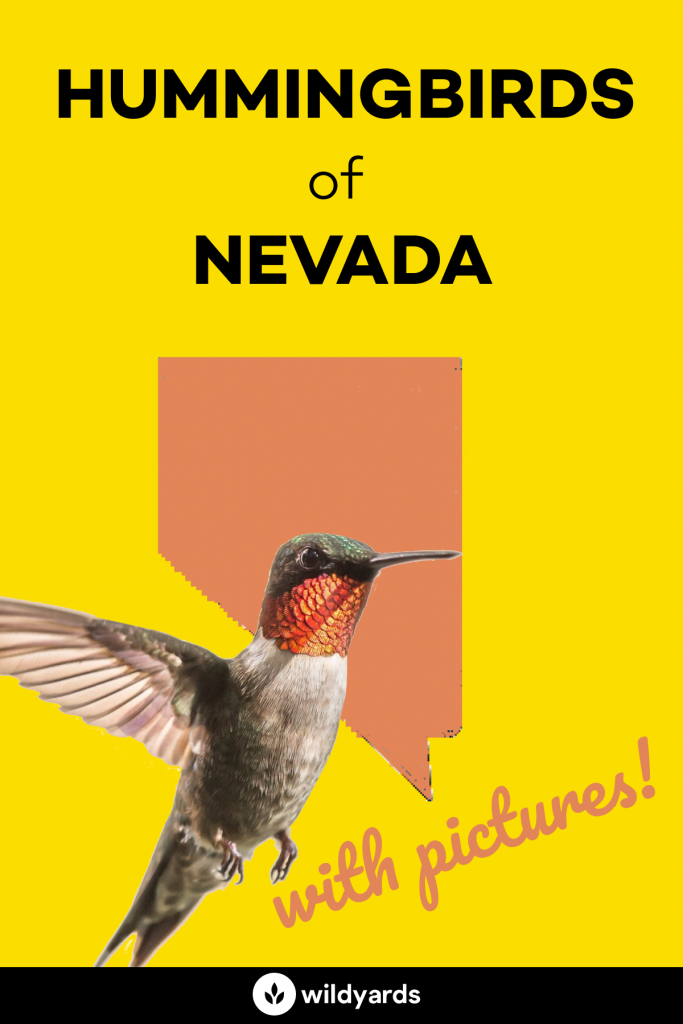
The 10 Hummingbird Species of Nevada
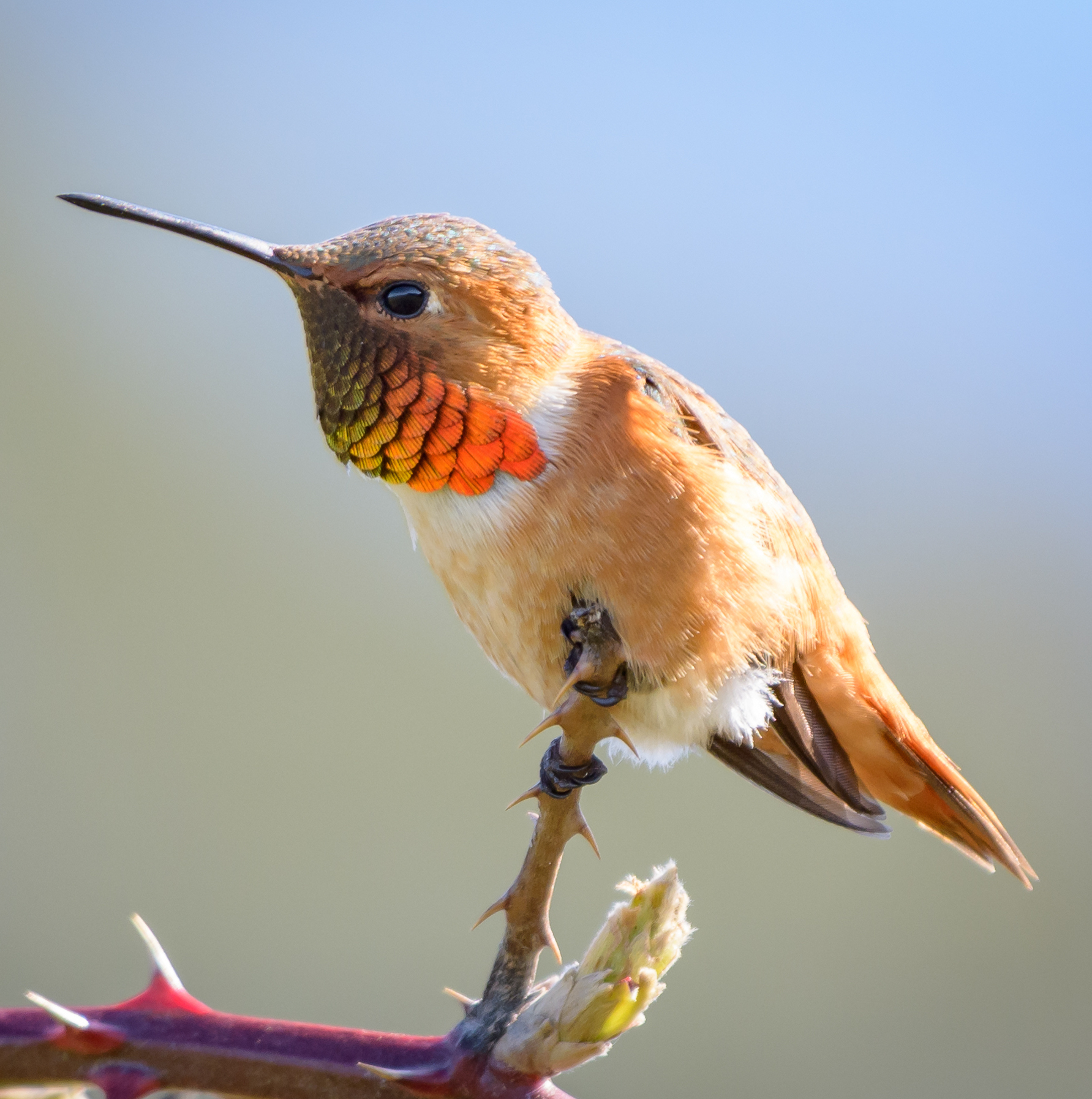
Allen’s Hummingbird
Selasphorus sasin
Order: Apodiformes
Family: Trochilidae
Size: 3.2 – 3.6 in (8-9 cm)
Overview
This small but territorial hummingbird has a medium-short to medium black bill and an extensive rufous plumage. It was named after the Californian bird collector, Charles A. Allen. Allen’s hummingbird has the most restricted breeding ranges of all native North American hummingbirds. Though their habitat has been altered by humans, they’ve adapted well to urban and suburban environments – zipping from feeder to feeder. In their natural environment, they use native plant species such as honeysuckle, bush-monkeyflower, and fuchsia-flowered gooseberry for their nectar needs.
How to Identify
The Allen’s Hummingbird is very difficult to distinguish from the Rufous Hummingbird. In fact, the female and immature males of both species are pretty much indistinguishable. In the adult male, the Allen’s Hummingbird has a green back and rump, but a rufous tail, and the Rufous Hummingbird usually has a rufous back, rump and tail. That’s the easiest way to distinguish the two.
Allen’s Hummingbird Range & Migration Map
The range of Allen’s Hummingbid is one of the smallest and restrictive of all North American Hummingbirds. They’re a common summer resident of northern coastal California and southern Oregon and a year-long resident of southern Californa. During migratory season, can be found in Arizona and even New Mexico.
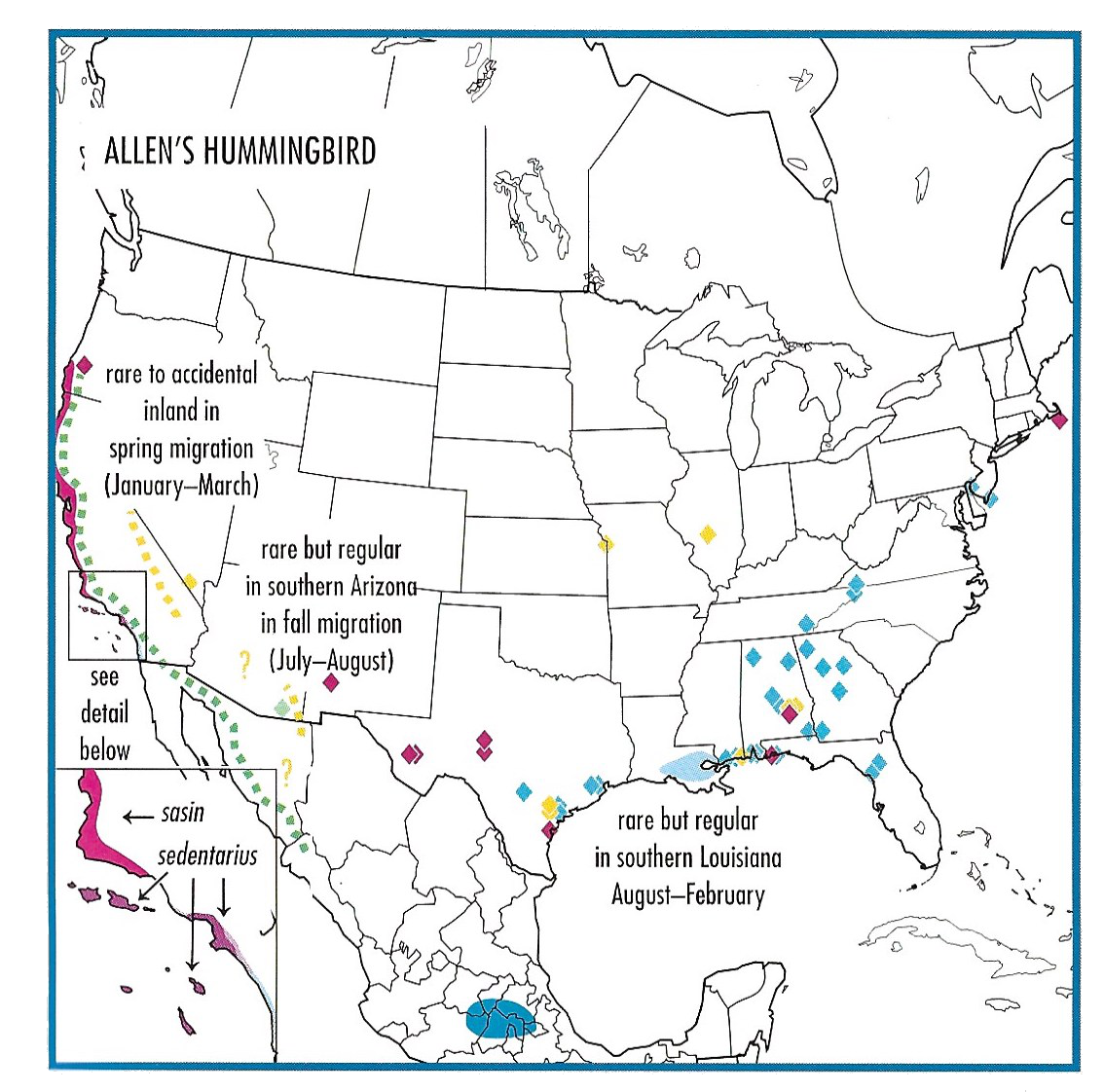
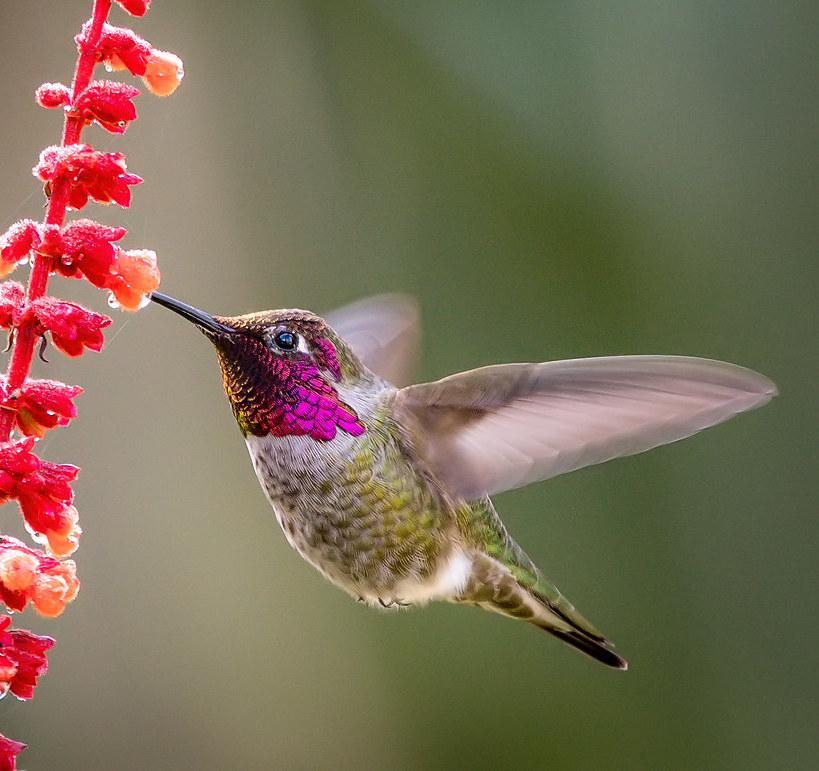
Anna’s Hummingbird
Calypte anna
Order: Apodiformes
Family: Trochilidae
Size: 3.5 – 4in (9-10cm)
Overview
Originally a native to California, the Anna’s Hummingbird is quite adaptable allowing it to expand its range northward and eastward chasing exotic flowers in urban gardens. It’s named in honor of Anna Massena, the Duchess of Rivoli and a generous patron of science. During the winter Anna’s hummingbird has been observed eating insects such as gnats and even eating sand and ashes – likely to provide essential minerals.
How to Identify
Anna’s Hummingbird is a medium-sized hummingbird with a medium sized straight black. bill. The male sports a red gorget. Unlike the Black-Chinned and Costa’s Hummingbird, Anna’s Hummingbird normally holds its tail still while hovering.
Anna’s Hummingbird Range & Migration Map
Anna’s Hummingbird is a common resident in California but has extended its range north towards the western coast of Washington and southeast to southern part of Arizona. It’s a rare winterer of western Texas.
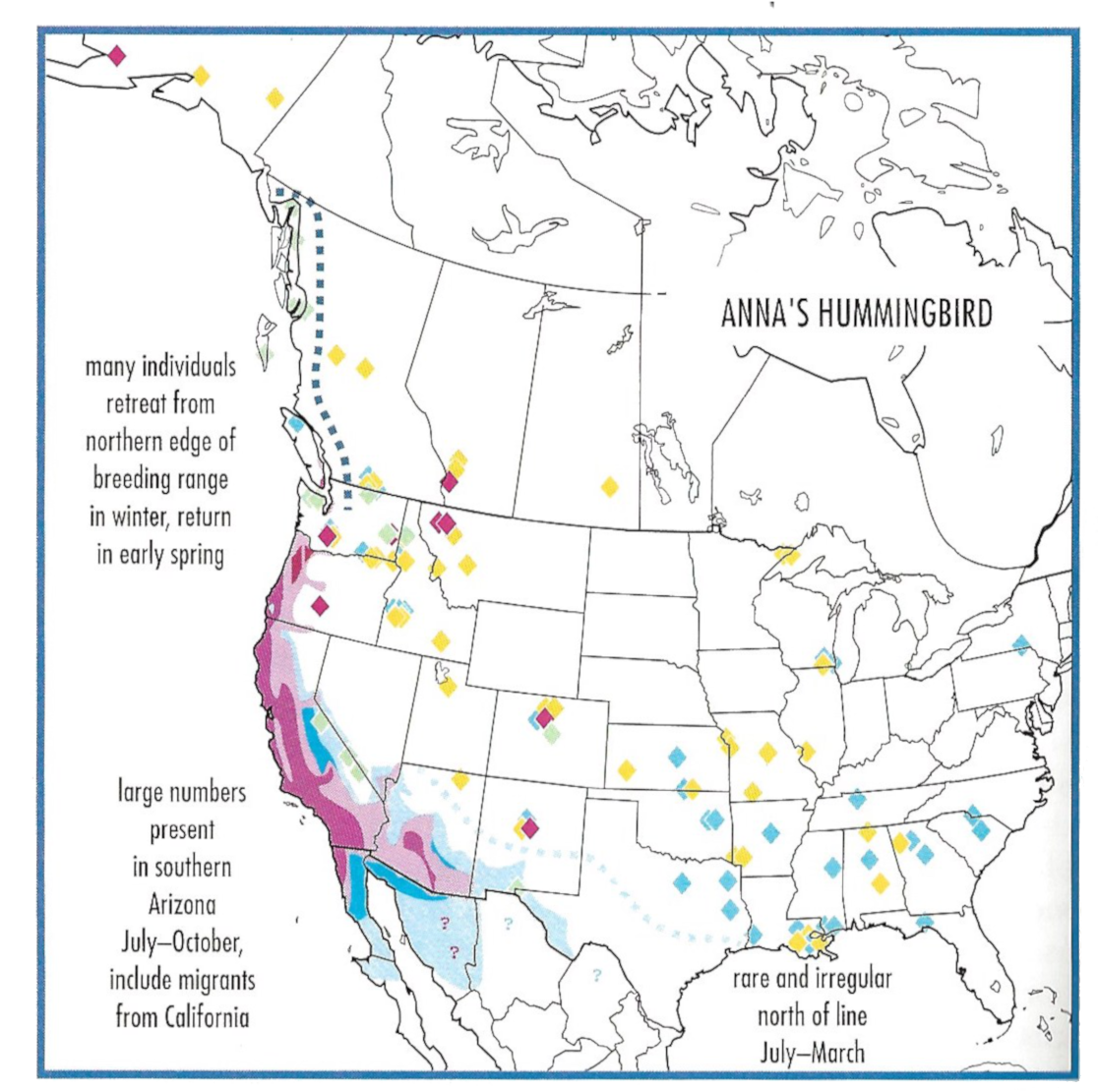
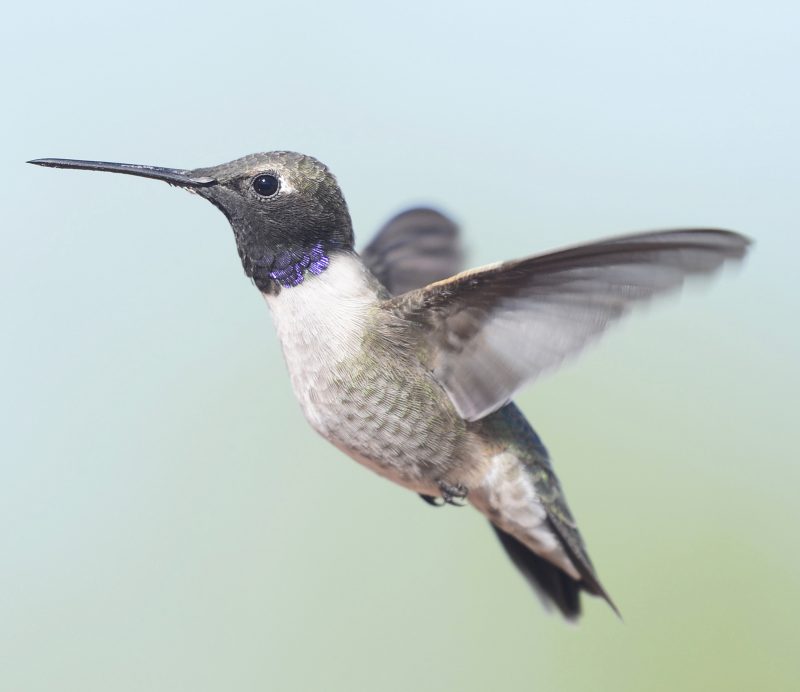
Black-Chinned Hummingbird
Archilochus alexandri
Order: Apodiformes
Family: Trochilidae
Size: 3.25 – 3.75 in (8.5 – 9.5cm)
Overview
The Black-Chinned Hummingbird is the western counterpart of the Ruby-Throated Hummingbird. The species was named in 1846 to honor its discoverer – Dr Alexandre. It can be found in most types of habitats, including backyards, all over the western United States. It pumps its tail almost constantly while in flight and isn’t picky about what plants it takes nectar from.
How to Identify
The Black-Chinned Hummingbird is a small hummingbird with a medium to long decurved bill and a grey crown. It’s gorget is mostly black with a hint of violet in the correct sunlight.
Black-Chinned Hummingbird Range & Migration Map
The small hummingbird breeds in most the western states, going as far east as eastern Texas. Can be found during the winter in the southern states bordering the Gulf of Mexico.
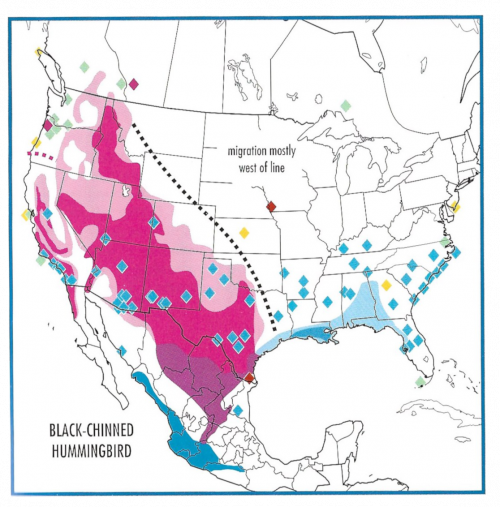
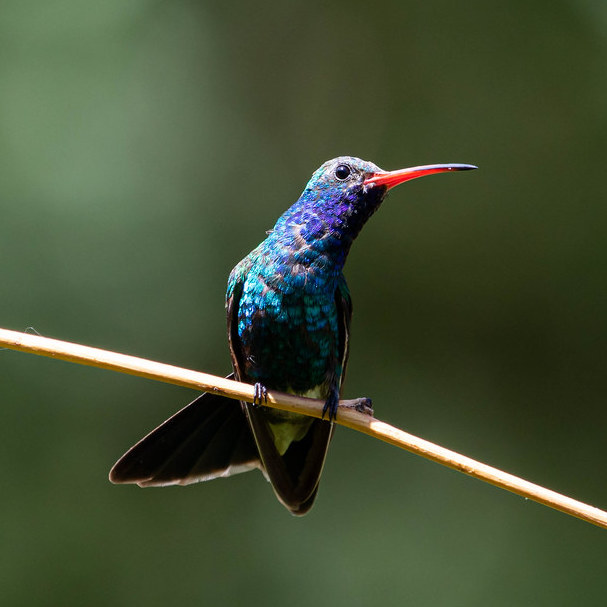
Broad-Billed Hummingbird
Cynanthus latirostris
Order: Apodiformes
Family: Trochilidae
Size: 3.5 – 4in (9-10cm)
Overview
This southwestern hummingbird is one of the most mild-tempered. It’s rare to see two males fighting over territory or females. Their quite uninspired name comes from the literal translation of its species name – cynanthus latirostris. It’s sound is unique from all other North American hummingbirds as it consists mostly of raspy and almost insect-like chattering.
How to Identify
The male Broad-Billed hummingbird is easy to distinguish. Some of it’s more defining features include a long broad bill, long and constantly-moving tail, and a glittering sapphire blue neck.The female and male are close in size and proportions.
Broad-Billed Hummingbird Range & Migration Map
The Broad-Bill Hummingbird is a rare resident in shrub thickets and canyons. Most often found in southern Arizona and southwest New Mexico at elevations above 5,000ft. In migratory season, this hummingbird has also been sighted in Texas and California.
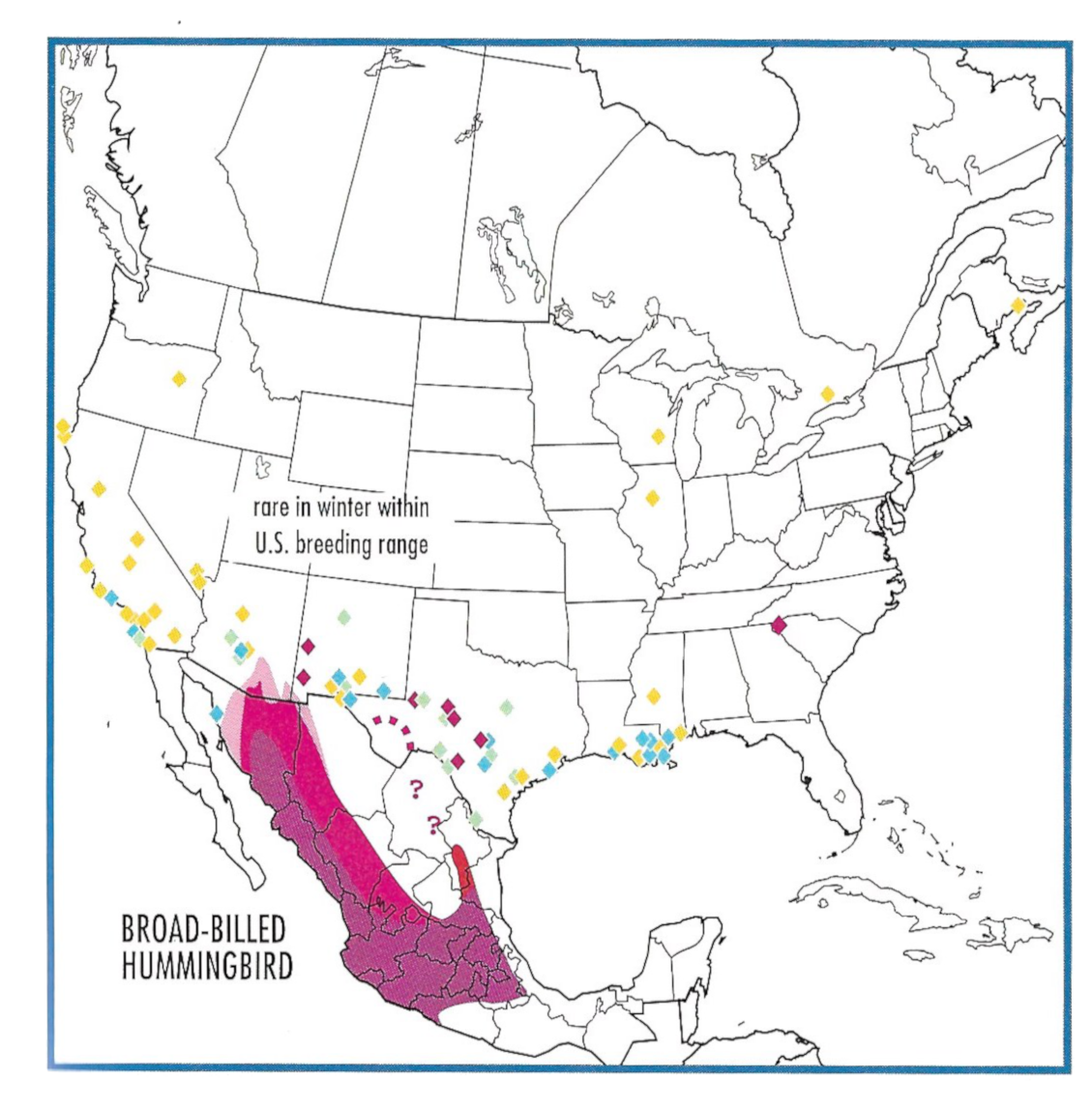
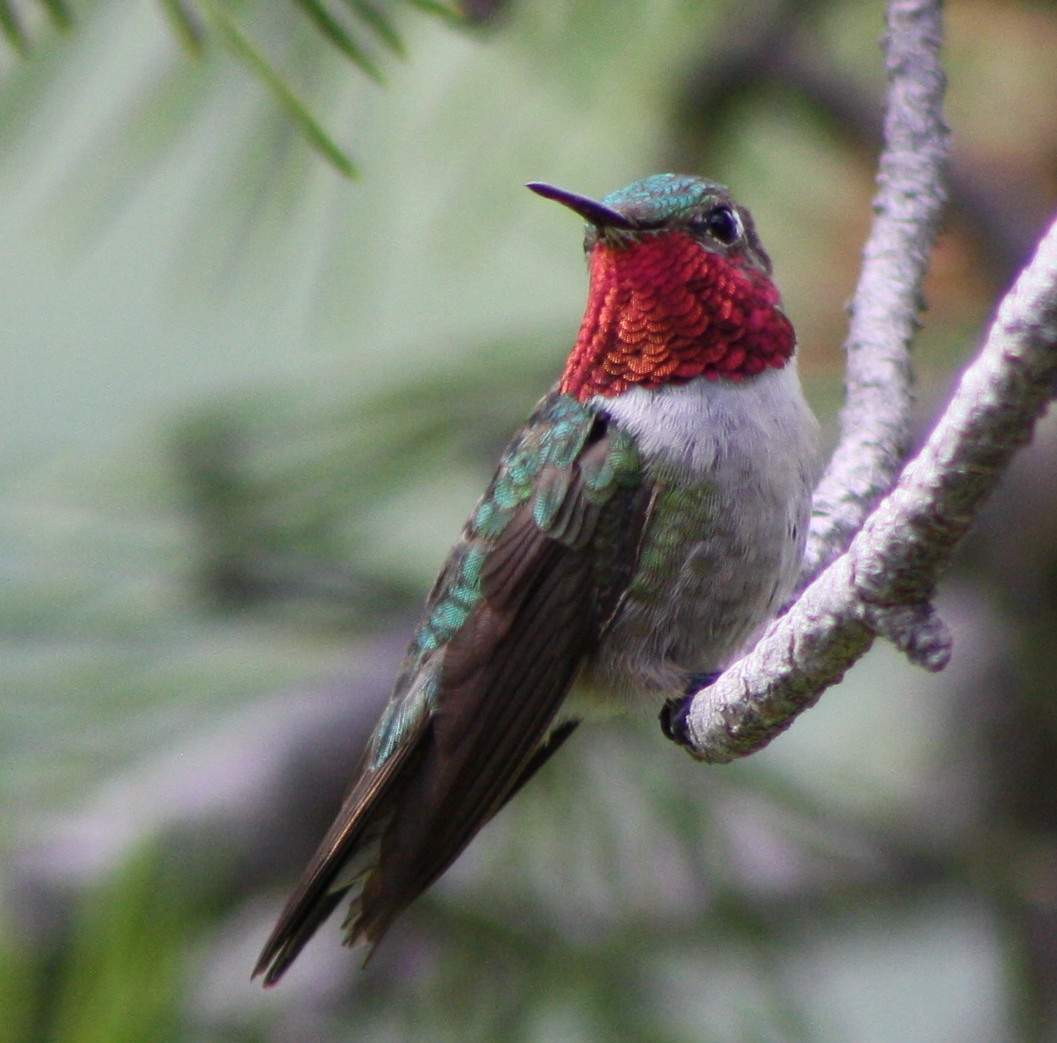
Broad-Tailed Hummingbird
Selasphorus platycercus
Order: Apodiformes
Family: Trochilidae
Size: 3.75 – 4in (9.5 – 11cm)
Overview
This medium-sized hummingbird is one of the most hummingbirds of the Rocky Mountains. Their call, which resembles the ringing of tiny bells, is a common sound during the Rocky Mountain summers. Fun fact, a female Broad-Tailed Hummingbird is the oldest known wild hummingbird in the United States reaching a ripe old age of 12 years.
How to Identify
The Broad-Tailed male hummingbird sports a hot pink gorget which contrasts with a white breast. It’s medium-sized with a a decently long tail and straight black bill. It’s a mild-manned hummingbird that is easily bullied by other hummingbirds.
Broad-Tailed Hummingbird Range & Migration Map
The Broad-Tailed Hummingbird breeds from Wyoming and central Idaho down to Mexico. Winters in Mexico and can rarely be found along the Gulf of Mexico states. It prefers mountain forests and woodlands.
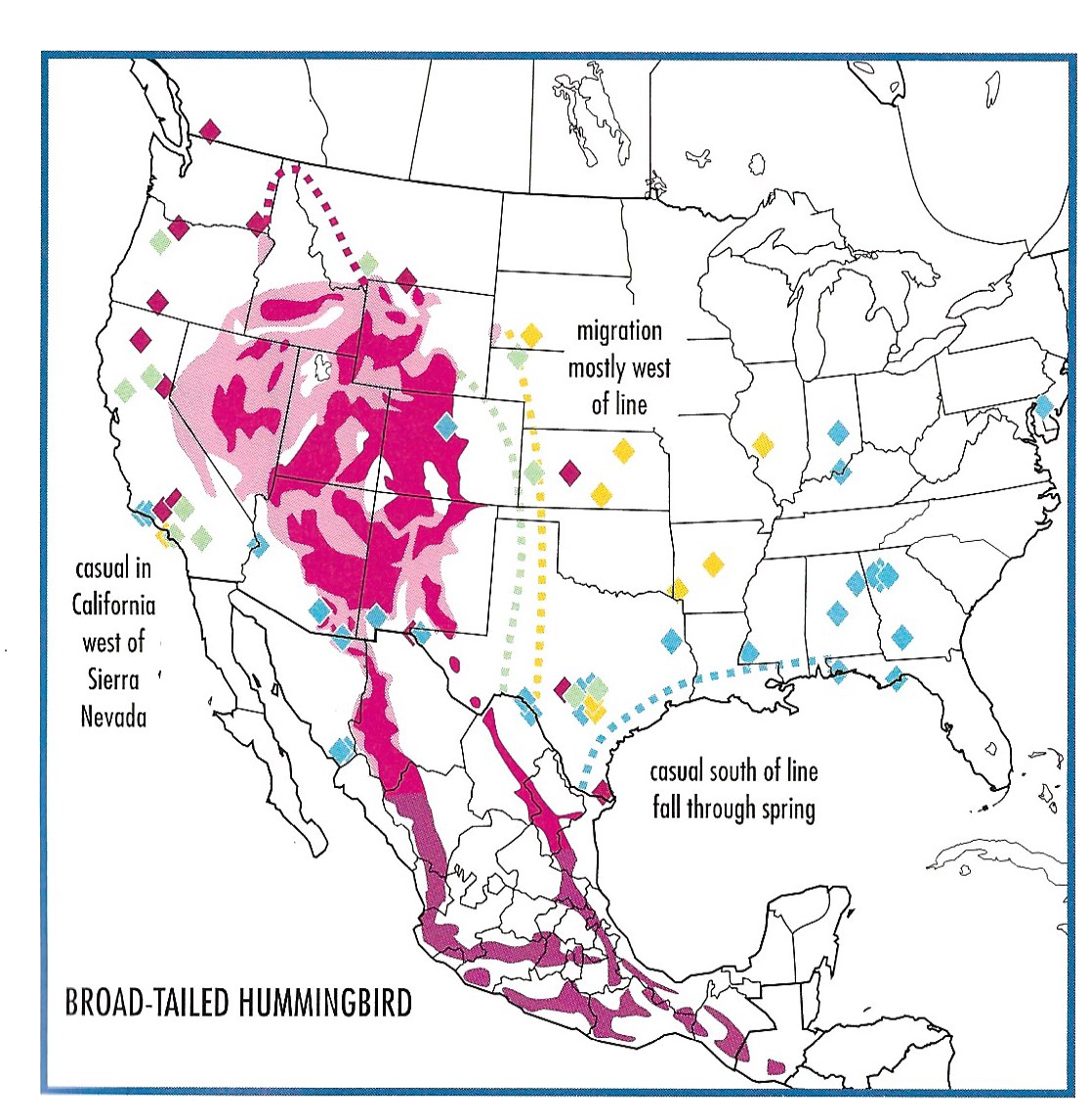
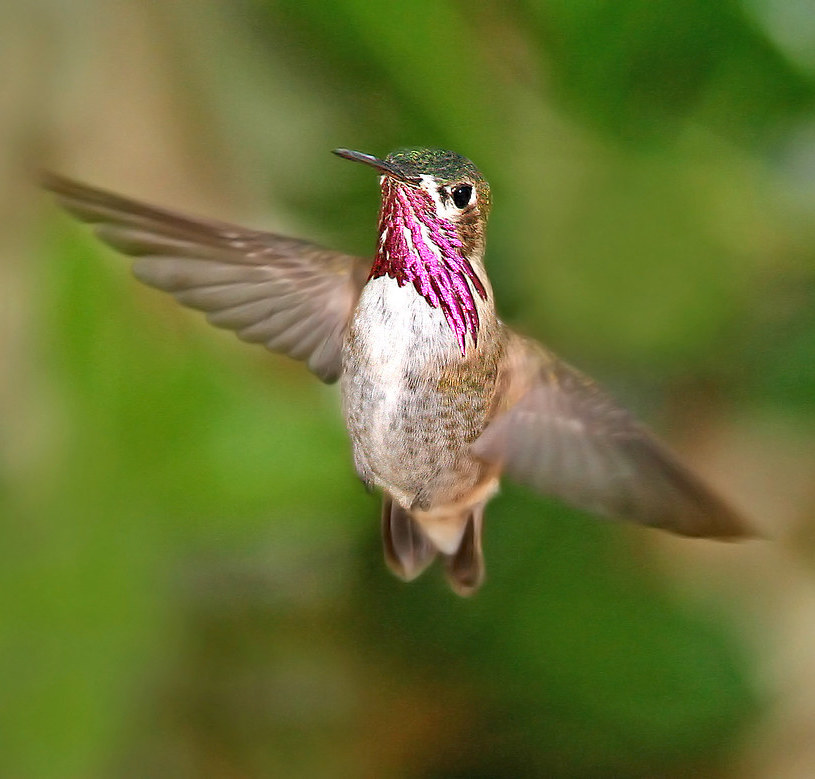
Calliope Hummingbird
Stellula calliope
Order: Apodiformes
Family: Trochilidae
Size: 2.75 – 3.25in (7.5 – 8cm)
Overview
The Calliope Hummingbird is the smallest breeding bird in the United States. In fact, the male weighs less than a penny. The Calliope’s species name is Greek for “beautiful voice” which is rather ironic given that this hummingbird has limited vocal ability. This hummingbird prefers habitats in conifer forests and older growth following forest fires.
How to Identify
The Calliope Hummingbird is a really small bird with a short black bill and short tail. The male sports a red to purple gorget with a white background. It’s very small size should distinguish it from other hummingbirds rather easily.
Calliope Hummingbird Range & Migration Map
The Calliope Hummingbird breeds in the northwestern states starting from northern California. During the winters, it can be found in the states along the Gulf of Mexico. During migration season, they can be found following both the Rocky Mountain and Pacific ranges.
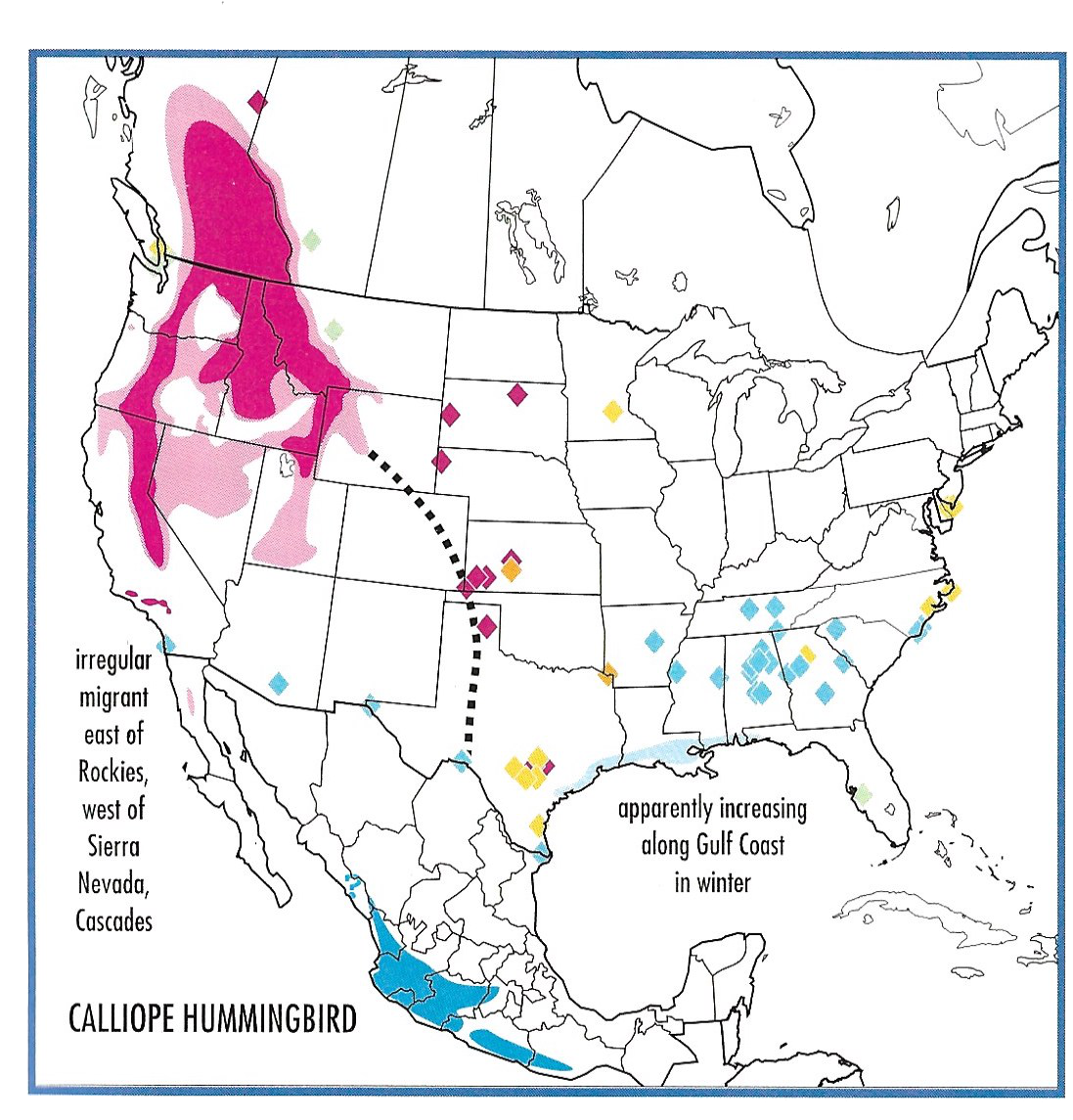
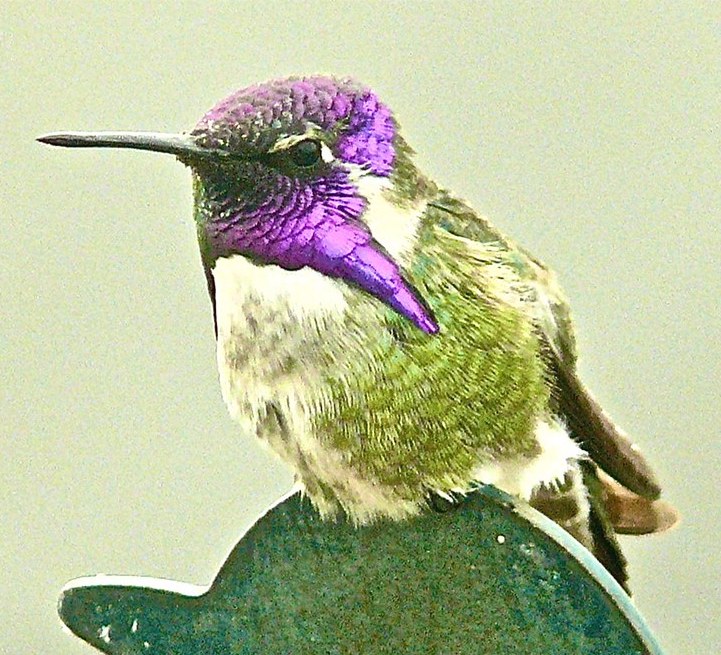
Costa’s Hummingbird
Calypte costae
Order: Apodiformes
Family: Trochilidae
Size: 3 – 3.5in (7.5 – 9cm)
Overview
The Costa’s Hummingbird is a desert hummingbird that has been edged out of its natural habitat by urbanization. Most commonly found in the Sonoran and Mojave Deserts. It’s named in honor of Louis Costa, who was an early collector of hummingbird specimens.
How to Identify
The “Fu Manchu” gorget of adult males is pretty much impossible to miss and makes the males easy to identify. But the females are easy to confuse with Anna’s or Black-Chinned hummingbirds. Anna’s female hummingbirds have longer and larger bills and longer tails that, unlike Costa’s are rarely seen being “pumped” while in flight.
Costa’s Hummingbird Range & Migration Map
The Costa’s hummingbird breeds in scrub habitats and thrives in the Sonoran and Mojave deserts. It’s a resident in southern California and southwestern Arizona but during the breeding season can be found in northern California and east to central Arizona.
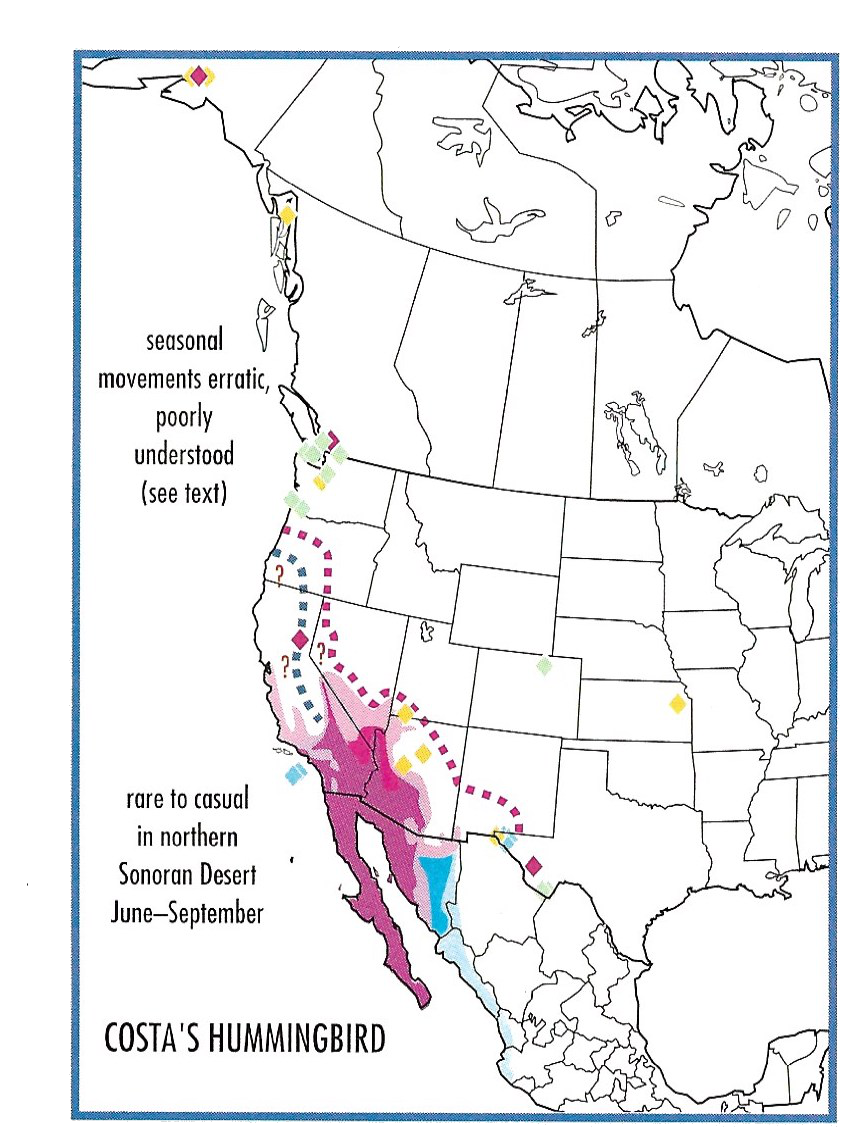
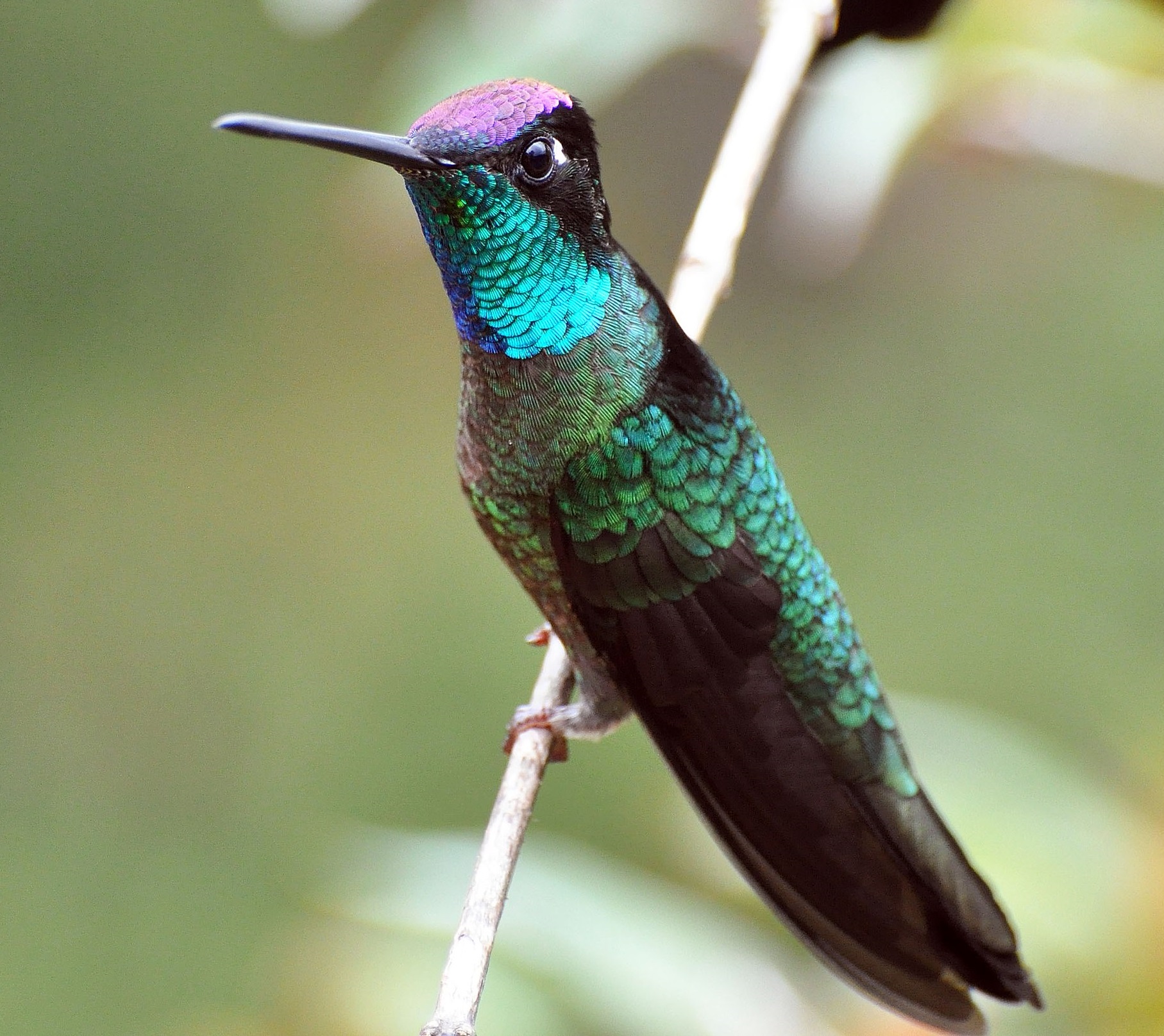
Rivoli’s Hummingbird
Eugenes fulgens
Order: Apodiformes
Family: Trochilidae
Size: 4.3 – 5.5in (11 – 14cm)
Overview
Like Anna’s hummingbird, Rivoli’s hummingbird is also named after a member of the Rivoli – specifically, the Duke of Rivoli, Anna’s husband. This species used to be called the Magnificent Hummingbird, but was recently renamed to distinguish itself from another species that has a blue gorget as opposed to the purple one that Rivoli’s hummingbird has. This particular avian is well-loved for its stunning colors in green and purple, and for its long body! It has one of the longest bills in the hummingbird species, and its heart rate can reach a blistering pace of 1,200 bpm!
How to Identify
Rivoli’s hummingbirds are wildly colored in waves of green, blue and purple, with touches of yellow. They are fairly large as hummingbird species go, and they are easy to spot as they have quite long, tall statures compared to others that are native in the US!
Rivoli’s Hummingbird Range & Migration Map
Rivoli’s hummingbirds breed primarily in the mountain ranges of western Texas, southeastern Arizona, and south-central New Mexico. The males are highly nomadic and banded birds have traveled hundreds of miles in a season. Sightings of this species can be seen in Colorado (May to October), Alabama (September to February), Arkansas (July), California (April), Georgia (winter), Minnesota (July), Nevada (June), Utah (July), Wyoming (June to July).
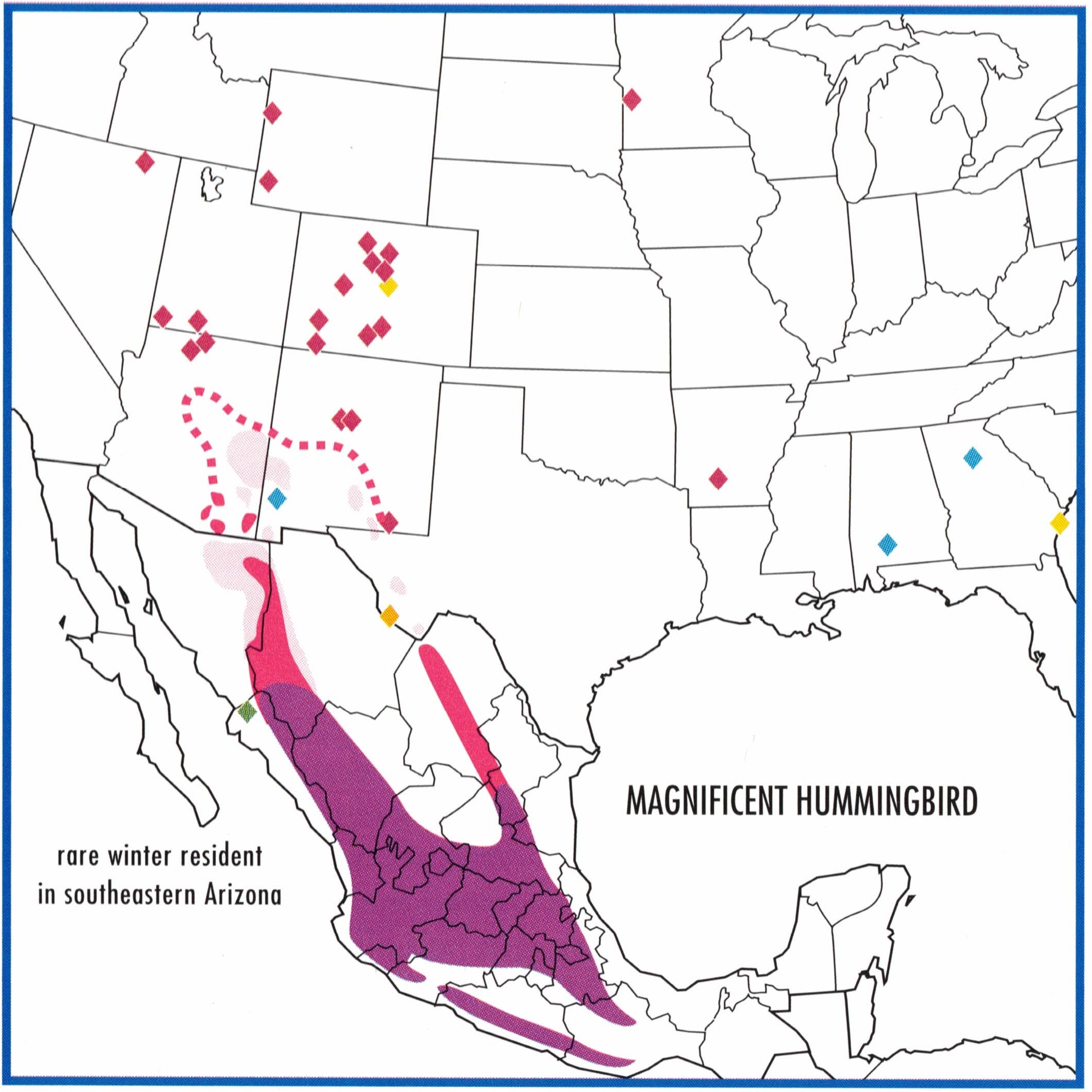
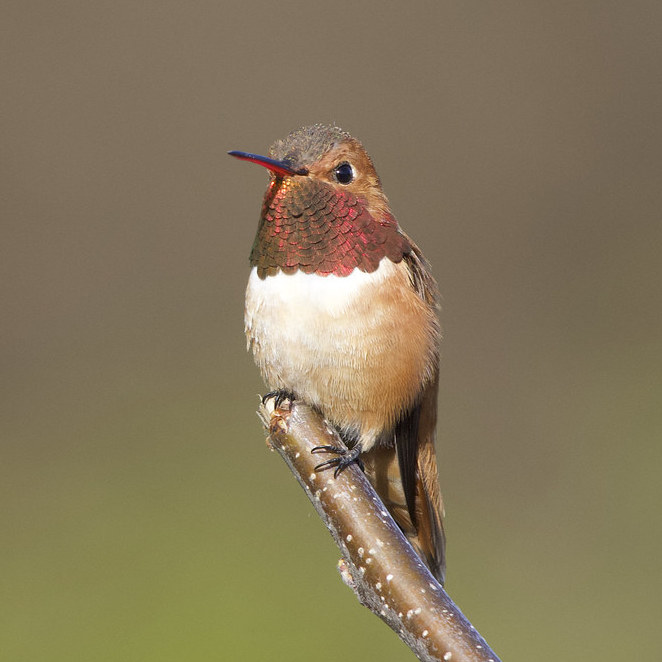
Rufous Hummingbird
Selasphorus rufus
Order: Apodiformes
Family: Trochilidae
Size: 3.5 – 4in (9 – 10cm)
Overview
The Rufous Hummingbird breeds farther north than any other hummingbird in the United States. It’s an aggressive species which makes it an unwelcome guest among hummingbird feeders. This hummingbird is an important part of the Pacific Northwest ecosystem, acting as a pollinator where the insects are at a disadvantage due to their cold-bloodedness.
How to Identify
The most distinguishing feature of the Rufous Hummingbird is the male’s rufous gorget that’s hard to miss. It’s a relatively small hummingbird with a short black bill. With the rufous plumage and aggressive behaviour, you’ll have no problem identifying male Rufous Hummingbirds.
Rufous Hummingbird Range & Migration Map
The Rufous Hummingbird breeds from the southeastern tip of Alaska down to the northern most parts of California, going as far east as Montana. During the winter, it migrates down to the Gulf of Mexico states.
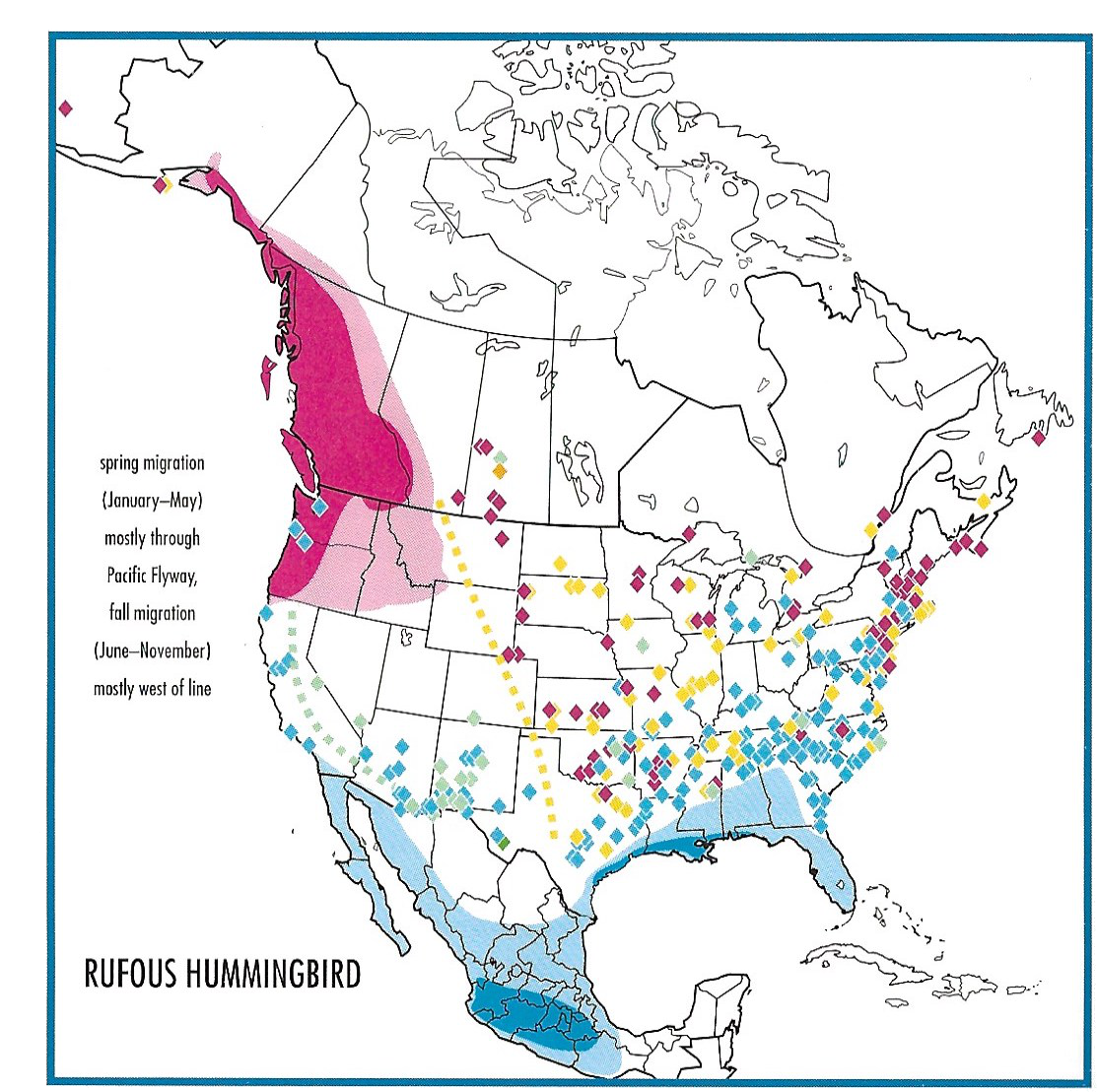
How to Attract Nebraska Hummingbirds to Your Yard
Want to see more hummingbirds in your backyard?
We have all the information you need on our site to help you do that. First, we recommend you read our guide on how to attract hummingbirds to your yard. That’ll give you the basics of what’s required to attract hummingbirds.
Then, we’d recommend reading our buyer’s guide on choosing the best hummingbird feeder. Setting up a hummingbird feeder or two is the best way to guarantee that hummingbirds will visit your yard.
There are a bunch of other ways to attract hummingbirds such as getting a bird bath and planting native flowers that attract hummingbirds.
All State Hummingbirds
Want to see what hummingbirds species are found in other states? Here’s our complete list of hummingbirds found in each state:
